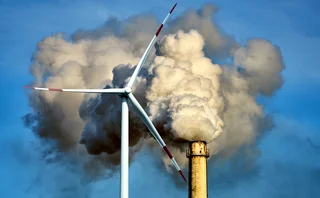US cannot cope with power demand: Nerc
The Corporation warned that unless additional resources are brought into service, some areas could fall below their target capacity margins within two or three years.
The report says that peak demand for electricity in the United States is forecast to increase by almost 18% (135,000 MW) in the next 10 years – enough energy to power more than 100 million homes on an average day. Yet committed resources to meet demand, including demand response programmes, are projected to increase by only 12.7% (123,000MW).
Nerc warns that areas such as California, the Rocky Mountain states, New England, Texas, the Southwest and the Midwest could fall below their target capacity margins within two or three years if additional supply-side and demand-side resources are not brought into service.
"We are at the stage where emergency situations are becoming more frequent," said Rick Sergel, president and CEO of Nerc. "Though some improvements have been made, we are requiring our aging grid to bear more and more strain, and are operating the system at or near its limits more often than ever before. As operating margins decrease, we are limiting our ability to manage unplanned events like equipment failures and extreme weather," Sergel said.
Nerc also warns that projected transmission additions still lag demand growth and new generation additions in most areas. Transmission miles are projected to increase by 8.8 % (14,500 circuit miles) in the United States and 4.8% (2,250 circuit miles) in Canada over the next 10 years.
While this is significantly more planned transmission than projected in last year's assessment, financing, pricing, cost allocation, siting, permitting, and building new transmission lines are challenged by a “Not in My Back Yard” attitude, said Sergel. "NIMBY is becoming NIMS: Not in My State,” he said. “Reliability of the power grid in one state affects reliability in other states too, due to the interconnected and interdependent nature of the power grid."
The report also pointed towards a looming talent drain with 40% of senior electrical engineers and shift supervisors in the electricity industry being eligible to retire in 2009, according to a Hay Group study.
It also pointed to Florida, Texas, the Northeast, and Southern California being overly reliant on natural gas as a fuel for electricity generation.
Nerc noted that wind and solar are becoming increasingly attractive generation resources, due to their ability to provide fuel mix diversification and greenhouse gas emissions reductions.
More on Electricity
CRO interview: Shawnie McBride
NRG’s chief risk officer Shawnie McBride discusses the challenges of increasingly interconnected risks, fostering a risk culture and her most useful working habits
Energy Risk Europe Leaders’ Network: geopolitical risk
Energy Risk’s European Leaders’ Network had its first meeting in November to discuss the risks posed to energy firms by recent geopolitical developments
Energy Risk US Leaders’ Network: tackling volatility
Energy Risk’s inaugural US Leaders’ Network convened in Houston in October to discuss risk management challenges caused by geopolitical upheaval, policy uncertainty and volatility
Uncertainty causes rethink on clean energy investment
Waning enthusiasm for net-zero pledges, environmental policy shifts, funding cuts and US tariffs are causing clean energy investors to retreat
Interview: Nodal Exchange’s Paul Cusenza
The fundamentals driving electricity prices, growing confidence in state-driven environmental programmes and Nodal’s share of the US zonal power markets
Energy Risk at 30: Learning from the past
Energy Risk looks back at the seminal events and developments that have shaped today’s energy markets
How quants shaped the modern energy markets
The business models of today’s utility firms are built on quantitative analysis, but the introduction of these techniques in the 1990s was far from smooth
Energy Risk Awards 2025: Nodal Exchange interview
Energy and environmental markets outlook, the impact of AI on power markets and Nodal Exchange’s plans







